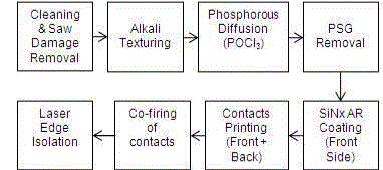
Why is an SLA important for customer service? Whereas KPIs are used for goal-setting and motivation, not usually associated with demerits for failure to meet. SLAs must be met in order to fulfil a contractual agreement, with clear repercussions if a service provider fails (often in the form of discounts or refunds). The difference between SLAs and KPIs simply lies in the intention. While SLAs and KPIs (key performance indicators) are different terms, it’s not uncommon for the metrics associated with them to be the same.Ĭustomer support teams set KPIs to decrease reply time, resolve tickets quicker, and get higher satisfaction ratings. When a company excels at each of these metrics (and continues to improve them), they can expect higher profit, longer customer retention, and decreased churn. These metrics have been perfected over the years to cover the most important aspects of customer service. (We’ve broken down all of these customer service metrics at length in previous posts if you want to learn more!)

The metrics are objective and often able to be calculated automatically, ensuring fairness for both parties.įor customer service providers, the most common metrics found in SLAs are: This holds the service provider and their clients accountable to a precise measurement. The real meat of service-level agreements lies in their metrics. Service-level agreements can be broken down into three types: customer-based, service-based, and multi-level SLAs. You’ll often see guaranteed service levels (like a dedicated customer service line or an assigned account manager) reserved for higher price points or exclusive to certain subscription plans.
#GROOVE SCRIBE SOFTWARE SOFTWARE#
The simplest example of this type exists in many freemium software products. Multi-level service agreements allow you to adjust or combine different types of SLAs to meet your customers’ needs. This guarantee is not just for one individual customer, but a general performance-level promise for all users of their software. Service-based SLAĪ service-based SLA covers the level of service for all customers-not just one.Ī SaaS business, for instance, may use a service-based SLA to ensure 99.9% uptime for its product and offer service credits for failure to perform. The agreement includes things like the quality of materials, the number of shirts to be produced within a given time, and the delivery dates. The SLA stipulates the services provided by the manufacturer to the individual e-commerce store. With customer-based SLAs, the agreement revolves around a single customer.įor example, an e-commerce store signs an SLA with a manufacturer to create their t-shirts. Using some realistic examples, let’s explore the basics of each type. Each sets up a contract between a specific type of industry or business relationship. The most common types of SLAs include customer-based, service-based, and multi-level agreements. They help set a standard for measuring customer happiness and team productivity.

SLAs can be either internal or public-facing. It’s most commonly used by technology and customer service providers.įor the customer service industry in particular, SLAs include metrics like response time, customer satisfaction, and replies to resolve. Numerical metrics are often assigned to determine success or failure of the agreement, along with clear repercussions for failing to meet the service level standards.

What is an SLA?Īn SLA (service-level agreement) documents the agreed-upon level of service between a vendor and a client. We’ll take a more practical approach to defining the term and help growing businesses understand how they can use SLA best practices to improve their support-regardless of the size of your team. And for the most part, that’s still it’s typical use case.īut, as more small businesses and e-commerce stores pop up-and more of them center their mission on providing great customer service-I’m seeing people make an effort to learn the jargon and understand terms like SLA to legitimize their services. I knew SLA as a term used by outsourced IT departments. I’ve worked at lean startups most of my career. And, of course, customer service teams use them to set expectations for service performance, response time, and satisfaction. Merchant suppliers use SLAs to determine production costs. Internet providers use SLAs to set standards for up-time. But the term “SLA” is particularly hard to define because of its wide scope.


 0 kommentar(er)
0 kommentar(er)
